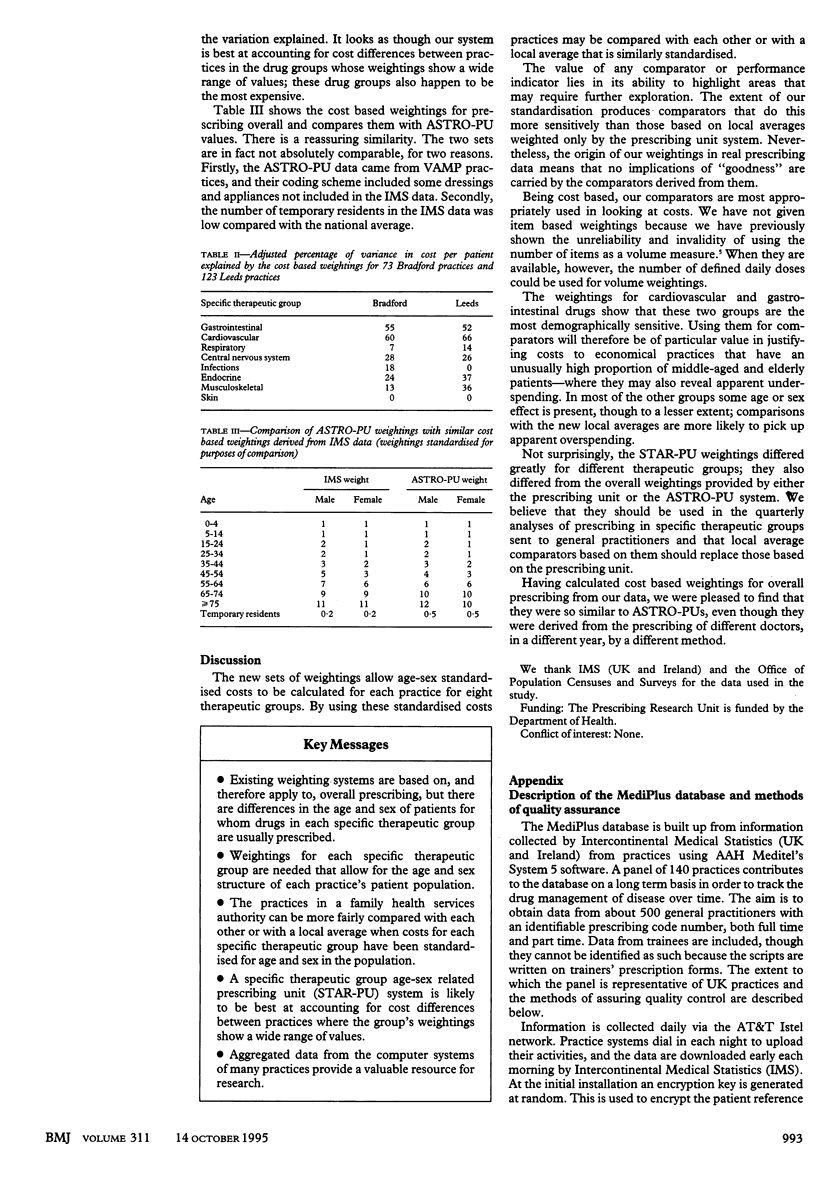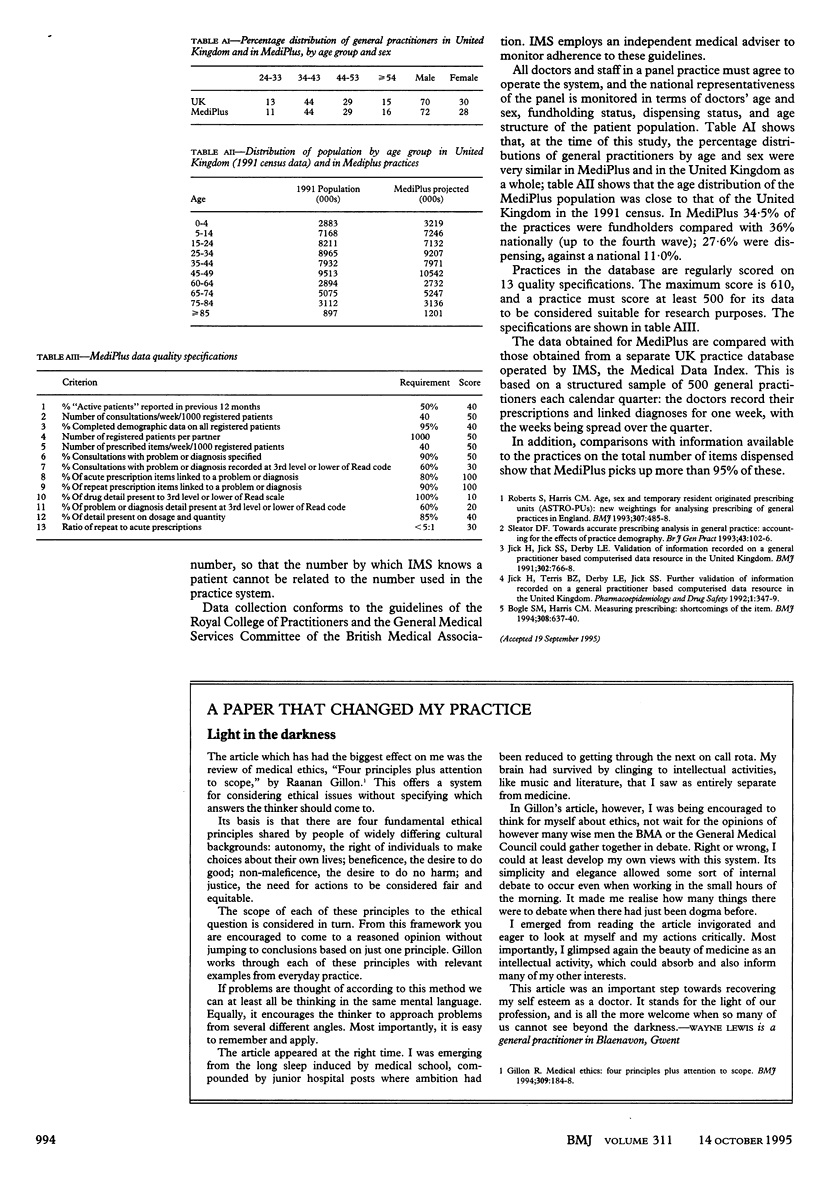Abstract
OBJECTIVES--To derive cost comparators for prescribing by English general practitioners in eight specific therapeutic groups, based on age-sex related weightings, and to confirm, from a new dataset, earlier age-sex weightings for overall prescribing (ASTRO-PUs). DESIGN--Calculations based on one year's prescribing data from selected practices using AAH Meditel software, held on MediPlus by Intercontinental Medical Statistics (IMS, UK and Ireland), and research practices using VAMP software, held on the General Practice Research Database. SETTING--112 English practices with 739,672 patients and 510 British practices with 3,126,570 patients. MAIN OUTCOME MEASURES--Cost based weightings for 18 age-sex groups and for temporary residents for eight leading specific therapeutic groups and for prescribing overall. RESULTS--The two datasets were similar in age distribution and in the way that prescription numbers were distributed by age-sex band in each therapeutic group. The cost based weightings for specific therapeutic groups showed great variation in the use of these groups for patients in different age-sex groups. When these weightings were applied to the prescribing of practices in two family health services authorities they differed in their power to predict prescribing costs: for cardiovascular and gastrointestinal drugs predictive power was particularly high; for drugs for infections it was particularly low, since these are widely used at all ages and for both sexes. Cost based weightings for overall prescribing derived from the IMS data were similar to those of the ASTRO-PU system even though they were derived by different methods from different datasets. CONCLUSIONS--The weightings (STAR-PUs) offer a sound basis for cost comparisons at the therapeutic group level. Cost-based weightings for overall prescribing derived from the IMS data were reassuringly similar to those of the existing ASTRO-PU system.
Full text
PDF



Selected References
These references are in PubMed. This may not be the complete list of references from this article.
- Bogle S. M., Harris C. M. Measuring prescribing: the shortcomings of the item. BMJ. 1994 Mar 5;308(6929):637–640. doi: 10.1136/bmj.308.6929.637. [DOI] [PMC free article] [PubMed] [Google Scholar]
- Gillon R. Medical ethics: four principles plus attention to scope. BMJ. 1994 Jul 16;309(6948):184–188. doi: 10.1136/bmj.309.6948.184. [DOI] [PMC free article] [PubMed] [Google Scholar]
- Jick H., Jick S. S., Derby L. E. Validation of information recorded on general practitioner based computerised data resource in the United Kingdom. BMJ. 1991 Mar 30;302(6779):766–768. doi: 10.1136/bmj.302.6779.766. [DOI] [PMC free article] [PubMed] [Google Scholar]
- Roberts S. J., Harris C. M. Age, sex, and temporary resident originated prescribing units (ASTRO-PUs): new weightings for analysing prescribing of general practices in England. BMJ. 1993 Aug 21;307(6902):485–488. doi: 10.1136/bmj.307.6902.485. [DOI] [PMC free article] [PubMed] [Google Scholar]
- Sleator D. J. Towards accurate prescribing analysis in general practice: accounting for the effects of practice demography. Br J Gen Pract. 1993 Mar;43(368):102–106. [PMC free article] [PubMed] [Google Scholar]


